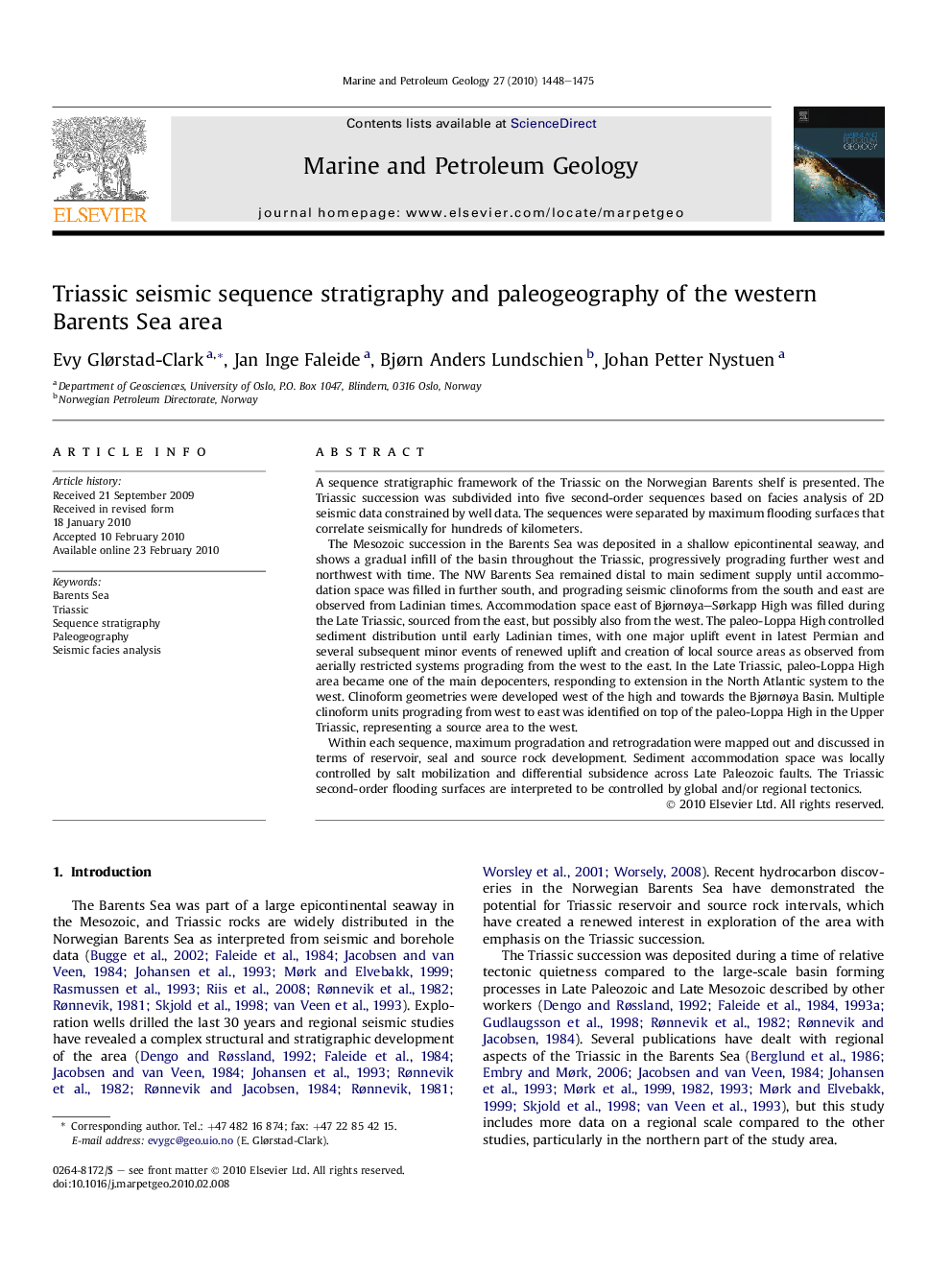| کد مقاله | کد نشریه | سال انتشار | مقاله انگلیسی | نسخه تمام متن |
|---|---|---|---|---|
| 4696216 | 1351662 | 2010 | 28 صفحه PDF | دانلود رایگان |

A sequence stratigraphic framework of the Triassic on the Norwegian Barents shelf is presented. The Triassic succession was subdivided into five second-order sequences based on facies analysis of 2D seismic data constrained by well data. The sequences were separated by maximum flooding surfaces that correlate seismically for hundreds of kilometers.The Mesozoic succession in the Barents Sea was deposited in a shallow epicontinental seaway, and shows a gradual infill of the basin throughout the Triassic, progressively prograding further west and northwest with time. The NW Barents Sea remained distal to main sediment supply until accommodation space was filled in further south, and prograding seismic clinoforms from the south and east are observed from Ladinian times. Accommodation space east of Bjørnøya–Sørkapp High was filled during the Late Triassic, sourced from the east, but possibly also from the west. The paleo-Loppa High controlled sediment distribution until early Ladinian times, with one major uplift event in latest Permian and several subsequent minor events of renewed uplift and creation of local source areas as observed from aerially restricted systems prograding from the west to the east. In the Late Triassic, paleo-Loppa High area became one of the main depocenters, responding to extension in the North Atlantic system to the west. Clinoform geometries were developed west of the high and towards the Bjørnøya Basin. Multiple clinoform units prograding from west to east was identified on top of the paleo-Loppa High in the Upper Triassic, representing a source area to the west.Within each sequence, maximum progradation and retrogradation were mapped out and discussed in terms of reservoir, seal and source rock development. Sediment accommodation space was locally controlled by salt mobilization and differential subsidence across Late Paleozoic faults. The Triassic second-order flooding surfaces are interpreted to be controlled by global and/or regional tectonics.
Journal: Marine and Petroleum Geology - Volume 27, Issue 7, August 2010, Pages 1448–1475